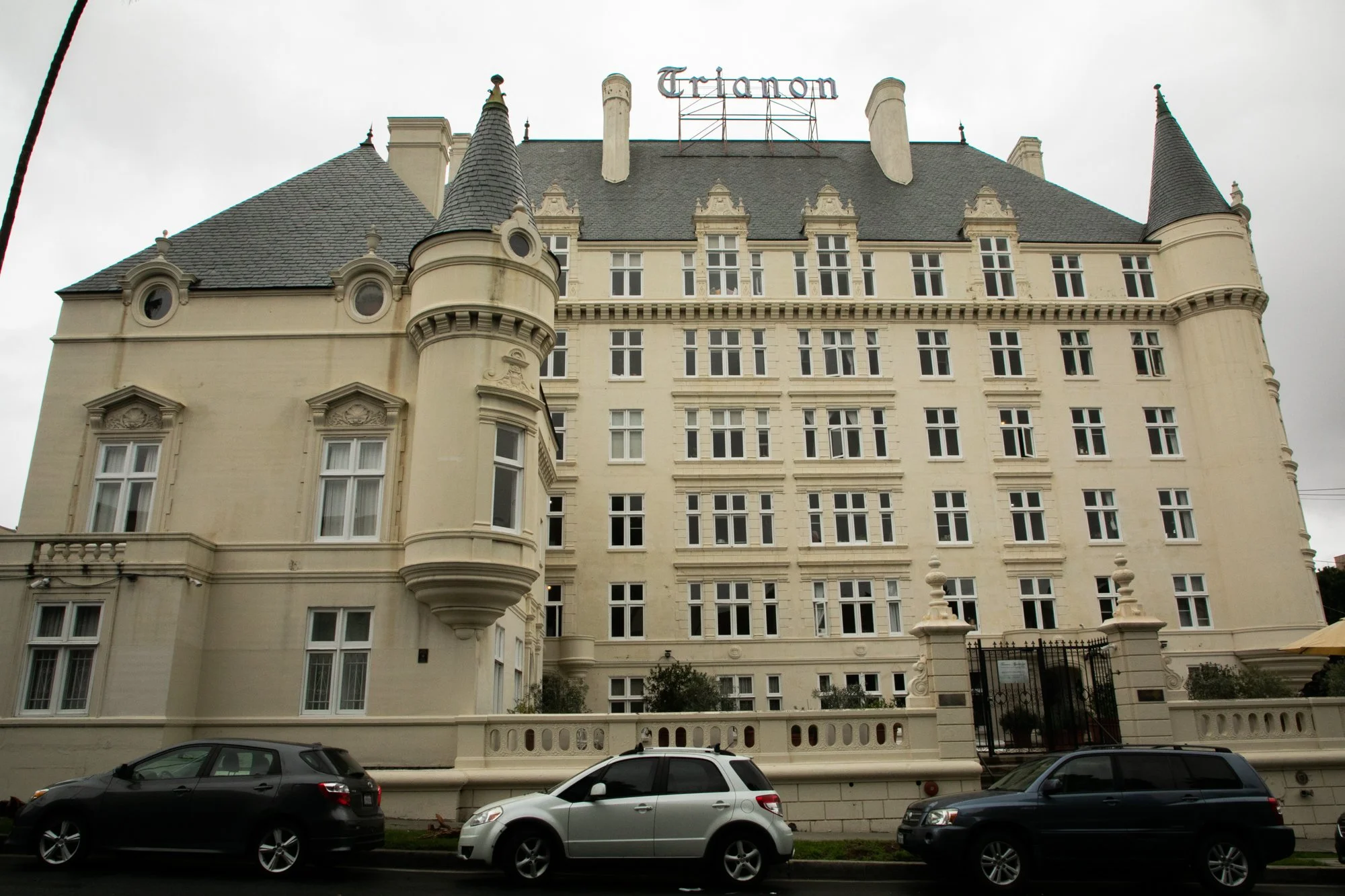Architecture: Chateau Le Trianon
Credit: Ari Adams
Text and Images by Ari Adams
Considered to be one of the many architectural landmarks of Los Angeles, the Chateau Le Trianon is one of the most recognizable of such landmarks and is a prime example of the Revivalist architecture movement that took place in the city in the late 19th century through the early 20th century. Designed by the Los Angeles area architect Leland A. Bryant, the Trianon, as the building is commonly known, was built in 1928 in what is now Thai Town, a small neighborhood located just south of the Hollywood Hills and which straddles East Hollywood and the ever-hip neighborhood of Los Feliz. Commissioned by Mary Pickford, the iconic and pioneering film actress, and her husband Douglas Fairbanks, the couple lived in the chateau’s two-story luxury penthouse until their divorce in 1930.
Credit: Ari Adams
Notable for its steeply pitched hipped roofs and neon blue sign stating the name of the building which glows during the dark hours of the day, the Trianon also features romantic tourelles with candle-snuffer roofing, an ivory white façade and grand patio entrance filled with potted plants and sculptures. Protected by the Los Angeles Cultural Heritage Commission, the original architectural details and features are protected from modification, providing its wealthy renters with the building’s original vast spaces and classic interior design.
Aside from the Trianon, Leland A. Bryant, the designer of the building, had a short yet varied career that has had a major influence on the architectural history of Los Angeles. Despite having worked in all architectural styles, his Chateauesque designs have become iconic throughout Los Angeles and especially Hollywood. His buildings have provided roofs for some of the most famous film actors from Marilyn Monroe and John Wayne to Mary Pickford who commissioned the Trianon. His other notable buildings are Sunset Tower and Chateau La Fontaine, which are both located in West Hollywood and have provided homes for some of Los Angeles’ most wealthy and elite residents since their construction.
Credit: Ari Adams
The Revivalist architectural movement in Los Angeles, of which the Trianon is one of the most significant specimens, refers to a period of time in which architects drew inspiration from historical architectural styles to design buildings in the city. The movement took place from the late 19th century to the mid-20th century, and was characterized by a resurgence of interest in different architectural styles from the past, such as Gothic, Mediterranean, Spanish Colonial, and Mission Revival.
Credit: Ari Adams
In Los Angeles, the Mediterranean Revival style was particularly popular. Despite this, the French Revival style of the Trianon is notable and highly influential. The Mediterranean Revival style, however, is much more common throughout the city and is inspired by the architecture of the Mediterranean region, particularly Spain. The style features characteristics such as red tile roofs, white stucco walls, arched windows and doorways, and ornate details. This style was seen as a suitable architectural language for the subtropical climate of Los Angeles. While the Mediterranean style is more common throughout Los Angeles, this makes the Trianon’s French Revivalist style all the more unique and desirable.
Credit: Ari Adams
Surrounded by low rise buildings typical of Los Angeles neighborhoods, the Chateau Le Trianon stands high above the rest, marking the entrance of visitors to the bustling neighborhood of Thai Town. As one of the most iconic buildings in Los Angeles and as a historically protected building, the Chateau Le Trianon will stand for years to come as a symbol of the Pioneering Age of Hollywood and of the Hollywood elites who have taken up residence in the building over its ninety-five years of history.












